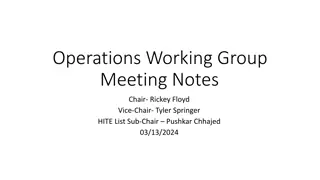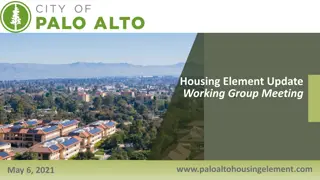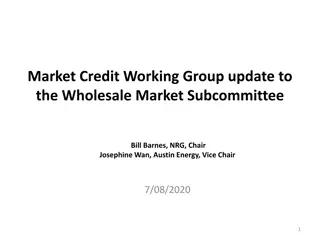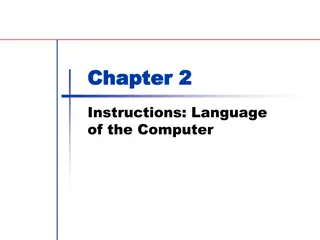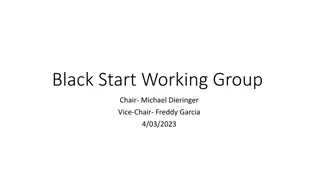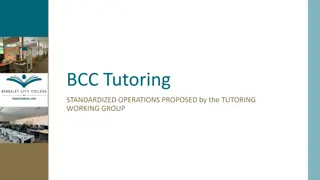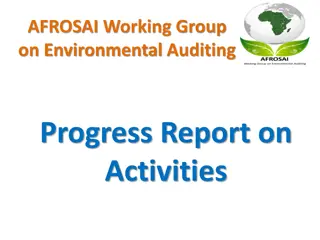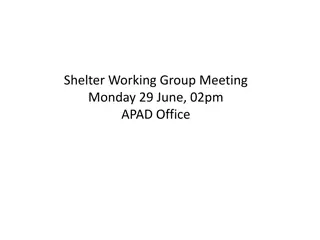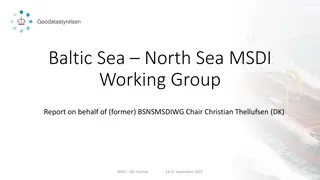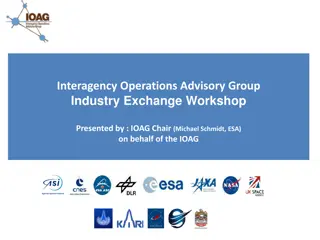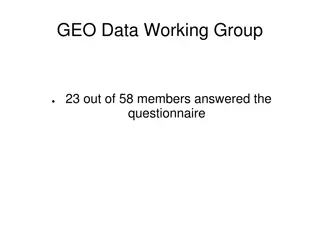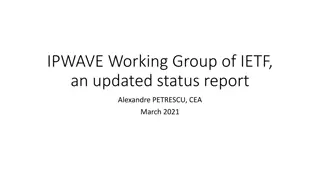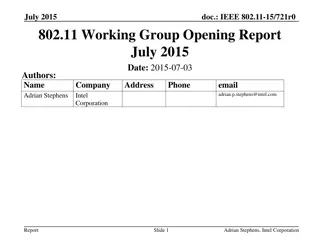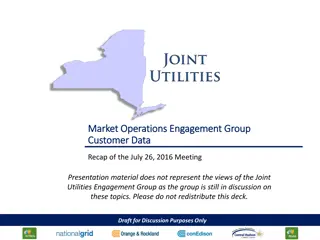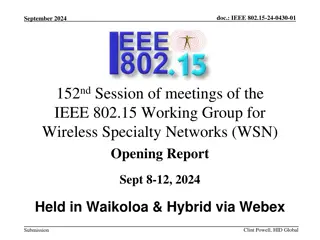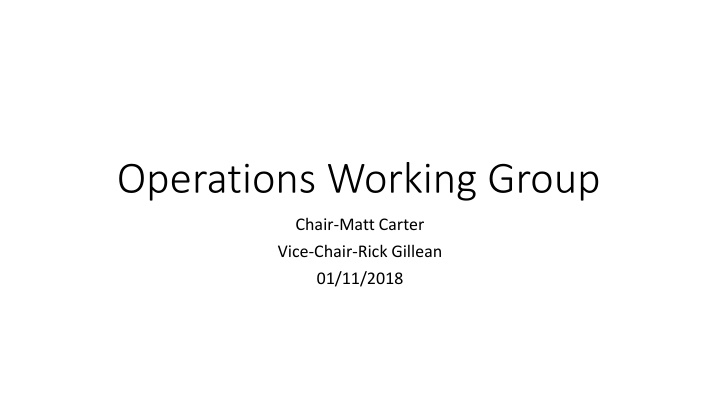
ERCOT NPR 849 Update: Voltage Set Points Clarification and Industry Responses
This update discusses ERCOT NPR 849 regarding the clarification of voltage set points at Generation Resources Points of Interconnection (POI). ERCOT's proposed changes and the industry responses, including comments from NRG and the Wind Coalition, are highlighted. The article also covers ERCOT's workshop plans to address concerns and ensure consistency in operations.
Download Presentation

Please find below an Image/Link to download the presentation.
The content on the website is provided AS IS for your information and personal use only. It may not be sold, licensed, or shared on other websites without obtaining consent from the author. If you encounter any issues during the download, it is possible that the publisher has removed the file from their server.
You are allowed to download the files provided on this website for personal or commercial use, subject to the condition that they are used lawfully. All files are the property of their respective owners.
The content on the website is provided AS IS for your information and personal use only. It may not be sold, licensed, or shared on other websites without obtaining consent from the author.
E N D
Presentation Transcript
Operations Working Group Chair-Matt Carter Vice-Chair-Rick Gillean 01/11/2018
NPR 849 - Clarification of the Range of Voltage Set Points at a Generation Resources Point of Interconnection (POI). ERCOT states that while the Protocols do not expressly prescribe any limit on the range of voltages, ERCOT may specify Voltage Set Points in a Voltage Profile. ERCOT has historically interpreted this range to extend from 0.95 to 1.05 per unit voltage ERCOT is proposing to limit the range of voltages that a Generation Resource may be asked to support under normal operating conditions.
NPR 849 - Clarification of the Range of Voltage Set Points at a Generation Resources Point of Interconnection (POI). The NPRR revises paragraphs (3)(a) and (3)(b) of Section 3.15 to clarify the range of voltages at the POI and circumstances for which a Generation Resource s reactive capability must be designed to meet and adds a new paragraph (3)(e) within the same section to clarify the ability of ERCOT and the Transmission Service Provider (TSP), or its designated agent (e.g. Transmission Operator (TO)) to issue an instruction for any available reactive capability at voltages outside of the reactive capability requirements identified in paragraphs (3)(a) and (3)(b). This NPRR does not modify any other provisions within Section 3.15 or its subsections; does not change the Generation Resource s responsibility to adhere to Voltage Set Points; and, does not modify the 2% tolerance band identified in paragraph (4) of Nodal Operating Guide Section 2.7.3.5, Resource Entity Responsibilities and Generation Resource Requirements. Rather, this NPRR simply aims to more clearly specify the reactive capability the Generation Resource must be designed to provide.
NPR 849 NRG Comments, NRG asserts that ERCOT s proposed changes fall short in addressing the physical realities of generator construction and the ability to maintain maximum dynamic response on Generation Resources. NRG proposes that ERCOT should utilize more reasonable limits identified in the North American Electric Reliability Corporation (NERC) white paper. The Wind Coalition expressed concern at the meeting that the changes, which apply to both new and existing generation, could be costly. Others in the meeting were concerned that not enough attention was being paid to the proposed Revision Request.
NPR 849 OWG NPR 849 Summary ERCOT was surprised by the pushback from Generation Resources given that they view their changes as a relaxation of the current requirements. ERCOT also said that they expected to get pushback from the Transmission Service Providers (TSPs) who were, quiet during the discussion. One TSP noted that they do have comments but they are waiting for the process to move forward before filing anything. A workshop to be held in early 2018 was ultimately proposed in an effort to spread the word about the changes and will include examples from both ERCOT and Generation Resource perspectives. ERCOT said that they plan to file comments a week prior to the next Reliability and Operations Subcommittee (ROS) meeting. ERCOT s stated there comments will talk about abnormal operations and will point to other guides and Protocol language to ensure consistency. Regarding NRG s comments, ERCOT said that they want to be more conservative than the NERC paper refers to due to a high penetration of renewable generation.
NPR 851 Procedure for Managing Disconnections for Bidirectional Electrical Connections at Transmission Level Voltages. This NPRR was developed to fully implement the market design envisioned in NPRR 596, External Load Serving Entities. This NPRR establishes a clearly defined disconnection process within ERCOT market rules applicable to a transmission voltage connection to the ERCOT grid which utilizes one electrical connection for both generation and load services. Tabled by OWG
NOGRR 169 - Disturbance Monitoring Requirements Update to Align with NERC Reliability Standard PRC -002-2. This NOGRR aligns language in Operating Guide Section 6.1, Disturbance Monitoring Requirements with NERC Reliability Standard Performance and Control (PRC)-002-2, Define Regional Disturbance Monitoring and Reporting Requirements. This NOGRR was filed by Bret Burford with AEP on behalf of the System Protection Working Group (SPWG). The IA showed that there is no impact and the NOGRR will move out of OWG.
Draft NOGRR Regarding the Clarification of Automatic Under-Frequency Load Shed (UFLS) Requirement. Matt Mereness with ERCOT went through a presentation that highlighted the key issues regarding UFLS as it pertains to Emergency Response Service (ERS). Currently, the Nodal Operating Guide states that to meet the 25% automatic firm Load shedding requirement, there is an exclusion for circuits not equipped with high-set under-frequency relays and is silent on the impacts of Emergency Response Service (ERS). As discussed at the three UFLS workshops (on Feb 20, April 20, and June 28, 2017), this NOGRR updates the Nodal Operating Guides to reflect operational expectations during an UFLS event. ERCOT also walked through their draft NOGRR which removes the historical exclusion of Load Resources equipped with high-set under-frequency relays from the expected system-wide 25% response in an under-frequency event by measuring compliance in an event using the Load at a frequency level of 59.3 Hz; provides clarification of Distribution Service Provider (DSP) and Transmission Operator (TO) responsibilities; clarifies two separate compliance requirements within Section 2.6.1; paragraph (1) for an actual event, and paragraph (2) for an annual survey;
Draft NOGRR Regarding the Clarification of Automatic Under-Frequency Load Shed (UFLS) Requirement. provides a new requirement for ERCOT to provide an annual inventory to the TO of the registered Load Resources in the DSP footprint; and, retires a summer 2001 five-year study reference to avoid any conflicts with current NERC Reliability Standard PRC-006-3, Automatic Under-frequency Load Shedding. ERCOT said that they want to make sure that the NOGRR doesn t blur lines between TO and DSP responsibilities. ERCOT is asking for feedback on their draft NPRR.
Southern Cross Transmission (SCT) Directive 9: Ancillary Services; Issues related to Most Severe Single Contingency (MSSC) and the Margin between Minimum Responsive Reserve Service (RRS) Procurement and Contingency Reserve Requirements. OWG reviewed the PUC directive regarding the MSSC and whether changes will be needed to the minimum Non-Spinning Reserve Service (NSRS) and Responsive Reserve Service (RRS). ERCOT said that they will reach out to other ISOs and will continue to seek feedback.
2018 Emergency Operation Plans. ERCOT Operations reminded the group that the emergency operations plans are to be submitted by Feb 15th each year. ERCOT plans to send a reminder to stakeholders by December 1, 2017 with the goal of getting the responses back by March 16, 2018.




